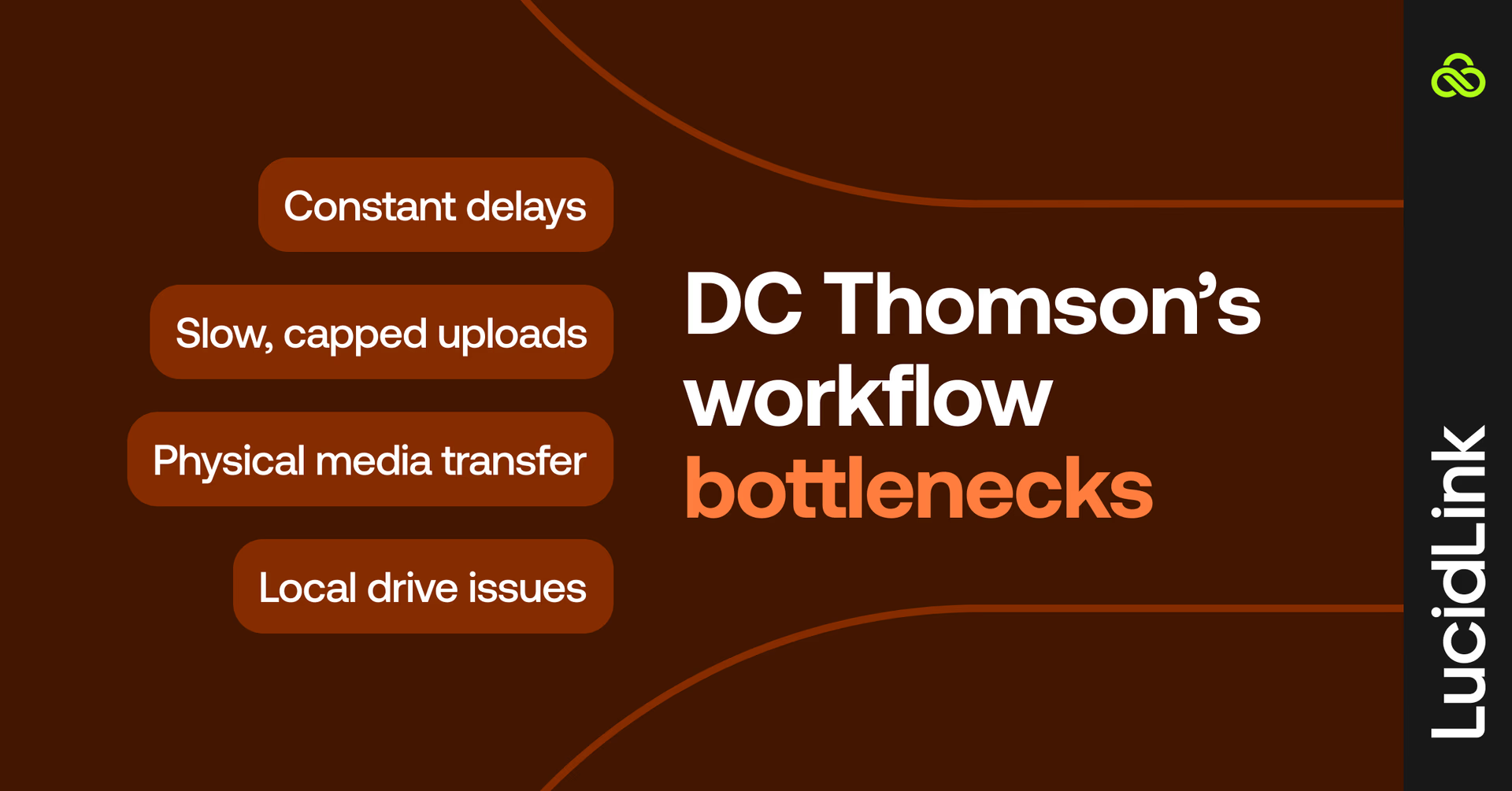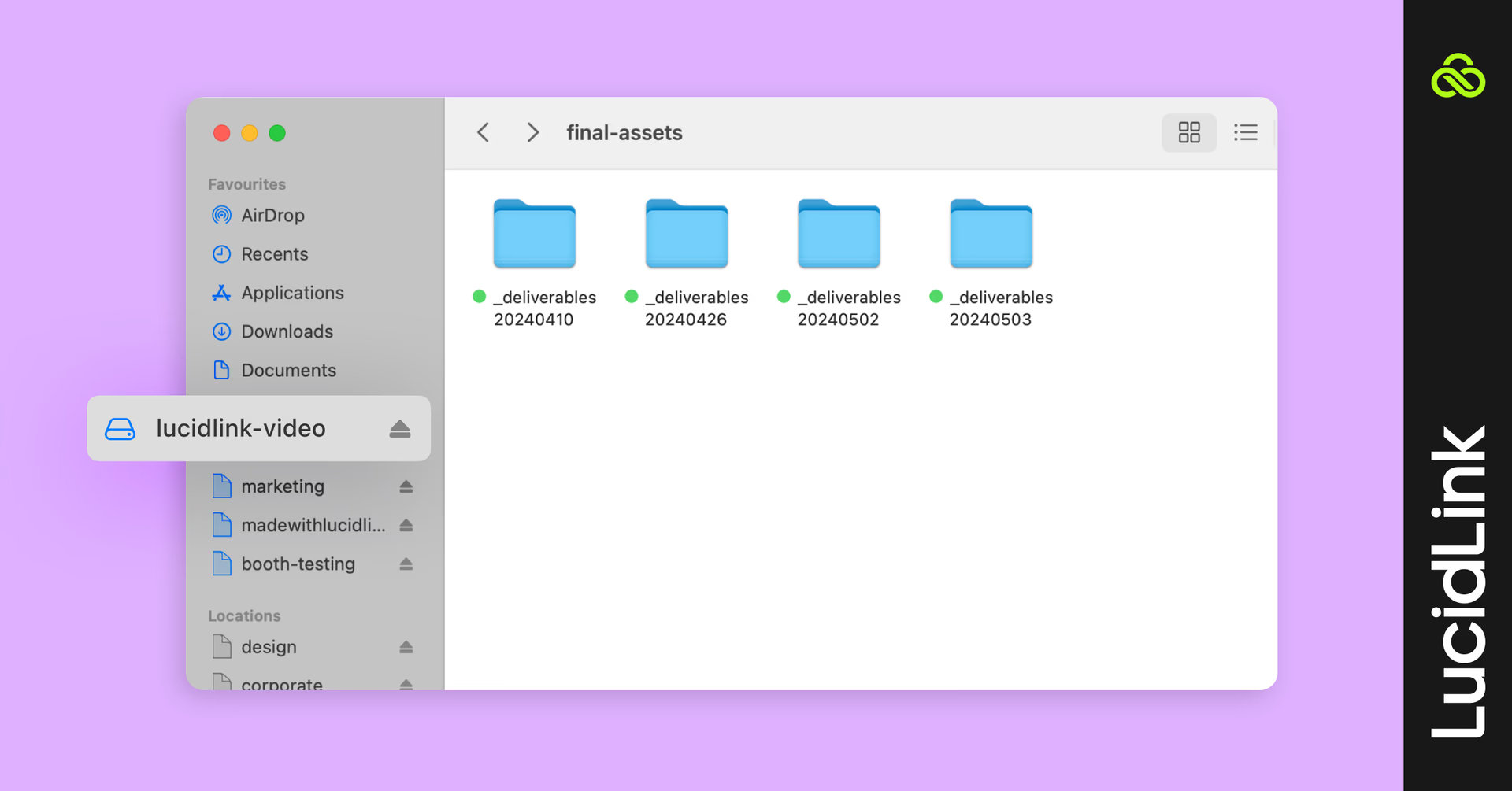Customer story
From couriers to the cloud: how DC Thomson built a modern video operation
November 2025, DC Thomson, Media & Publishing
4 mins

Table of contents
Your files, faster.
Access any file instantly, anywhere. Collaborate in real-time from one always-up-to-date, secure cloud filespace.
About DC Thomson
Headquartered in Scotland with a flagship office in London Fleet St, DC Thomson has a 200-year-old heritage with brands that have been the voice of their communities for generations.

In recent years it has undergone a transformation from its publishing roots, to focus on building digital subscriptions, membership and B2B revenues. DC Thomson’s consumer business has over 400k subscribers, alongside a portfolio of B2B propositions, including puzzle solutions and Beano Brain, all regularly work with global brands and businesses.
Background
Just a few years ago, video at DC Thomson was a nice-to-have in a print-first newsroom.
When demand for unique, local video content exploded, the AV team, led by Mark Asquith, Head of AV alongside Callum Main, Video Editor and Drew Farrell, Group Video Editor, was tasked with building a professional video operation from the ground up.
"The challenge was to build a workflow from scratch," Mark explains.
Today, the AV team creates standout video content for titles across the company’s portfolio, from breaking news and lifestyle pieces to specialist coverage for Energy Voice and Beano Brain.
They told us how they built a modern, cloud-first workflow and how LucidLink became the backbone of their creative process.
The challenge: scattered files, wasted hours
Before LucidLink, the team relied on a patchwork of WeTransfer, Dropbox, Adobe Team Projects and even couriers to move footage between cities.

This led to constant delays and frustration:
Slow, capped transfers: “Our uploads were capped at 2GB, and speeds were awful.”
Physical delivery: “We literally had someone driving SD cards to my house — 40 minutes each way just to move 60GB.”
Local drive headaches: editors filled up their own hard drives and struggled to sync projects.
Lost productivity: “If I filmed in Aberdeen, it could take longer to upload the footage than just drive it one and a half hours to Dundee,” says Callum.
Drew sums it up: “It sounds daft, but at the time the only solution was putting projects on hard drives and driving them around.”
For a team trying to produce timely, local content across multiple cities, the process couldn’t keep up.
Finding LucidLink
In May 2022, the team attended MPTS in London. They sat in on a LucidLink session in the tech theatre and what they saw immediately clicked.
The team signed up for a free trial and ran a short pilot, quickly proving the impact.
“From the start it was a game changer,” says Drew. “It just worked.”
What sold them was LucidLink’s simplicity. Unlike the big, complex video CMS systems they'd seen at the show, this was a tool that slotted into their existing Adobe and Frame.io workflow — without a massive IT project or procurement roadblocks.
LucidLink is light touch. We didn’t need a huge video CMS, just something that worked. And LucidLink does.
Mark Asquith,Head of AV, DC Thomson
Working with LucidLink partner Jigsaw24, DC Thomson rolled out LucidLink across their AV and video operations.
The solution: LucidLink as a backbone
Today, the DC Thomson AV team runs a cloud-first workflow built around LucidLink, Adobe Premiere Pro and Frame.io.

All projects live in one shared LucidLink filespace, accessible across brands, cities and team members. Whether it's breaking news from Aberdeen, lifestyle content from Dundee or Beano Brain video for a global client, everything lives in one place.
Editors work instantly from the same media. No downloads, syncs or version control issues. Senior editors and occasional contributors can pick up projects seamlessly, even mid edit.
"The fact that I can just drop a project and Drew or Callum can pick it up, that's superb," says Mark. "We can all work collaboratively and lean on each other."
The team manages 70-80TB of active content in LucidLink, with older projects archived to AWS Glacier, a process that now takes a few mouse clicks instead of weeks of planning.
The results: faster workflows, less stress
DC Thomson content has to be local, trusted and original. Stories only they can tell.
LucidLink helps the team achieve this by removing the friction of file management and letting them focus on storytelling.
“It reduces stress and increases capacity,” Callum says. “We can spend time creating, not doing file admin.”
Results at a glance

Hours reclaimed: “It’s saved us weeks of waiting. Plus, we have no more stacks of hard drives.”
Zero bottlenecks: multiple editors can pick up the same project, even mid-edit.
Cost savings: tens of thousands saved on drives, couriers, postage and avoided NAS procurement.
Scalable storage: 70–80TB managed seamlessly, with older projects moved to AWS Glacier.
Less stress: “The biggest saving is our sanity. It just works.”
“We almost forget we’re using it — and that’s exactly how it should be,” says Drew.
What’s next?
The team's next challenge? Turning their reporters into video creators.
"We've got all these reporters out at events, sports matches, breaking news," Mark explains. "The best camera is the one you have with you. But we need to make it so easy they can capture video, hit send and then get back to writing their story."
That's where LucidLink's roadmap comes in. With mobile uploads and a deeper Frame.io integration, the team is looking ahead to exploring true camera-to-timeline capabilities.
"If the footage is in the timeline before they've finished writing the story," Mark says, "that's a win."
Keep reading

From on-prem bottlenecks to hybrid freedom: Madecraft's remote editing workflow
Discover how Madecraft moved from on-prem bottlenecks to hybrid freedom with a modern remote editing workflow built for creative collaboration.
19 November 2025, 3 mins read

How Widseth unified multi-office CAD work and cut storage costs by 25%
Discover how Widseth gave 12 offices faster CAD access, eliminated hardware bottlenecks and cut storage costs by 25% with LucidLink.
10 November 2025, 4 mins read

BGE accelerates multi-office CAD and GIS workflows with LucidLink
See how BGE, Inc. replaced Panzura and costly VDI with LucidLink, gaining "local-drive" speed for 600+ CAD/GIS users across 22 offices for six-figure savings.
31 October 2025, 3 mins read